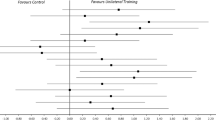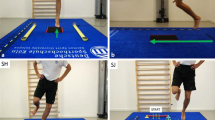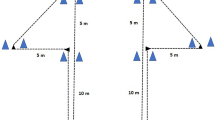Abstract
It is a well known fact that in many sport activities, a technical gesture is more effective and easier to perform in a situation of balance. Short-term balance training (BT) seems to be effective for rapidly improving muscular strength and for reducing imbalances between corresponding limbs. Moreover, reducing imbalances between corresponding limbs may be useful for the prevention of injuries. The aim of the present study was to investigate the link between balance and strength in young soccer players. The experiment was carried out on 133 young male soccer players (age: 18.2±1.9). The Libra Fixed Point (LPF)-Libra Closed Eye (LB) balance tests as well as the Counter Movement Jump (CMJ-CMJMono) tests were significantly (p<0.05) correlated (r=0.43 and r=0.63, respectively; p<0.01). Significant correlations (p<0.05) were found between the balance LPF and CMJ (r=−0.36, p<0.01), between LB and CMJ (R=−0.22, p<0.05), between LPF and CMJMono (r=−0.48, p<0.01) and between LB and CMJMono tests (r=−0.42, p<0.01). These results may have interesting implications for the effects of BT.
Similar content being viewed by others
References
Bruhn S, Kullmann N, Gollhofer A (2006) Combinatory effects of high-intensity-strength training and sensorimotor training on muscle strength. Int J Sports Med 27:401–406
Judge JO, Lindsey C, Underwood M, Winsemius D (1993) Balance improvements in older women: effects of exercise training. Phys Ther 73:254–262; discussion 263–265
Wolfson L, Judge J, Whipple R, King M (1995) Strength is a major factor in balance, gait, and the occurrence of falls. J Gerontol A Biol Sci Med Sci 50:64–67
Gualtieri D, Annoni M, Alberti G (2006) Comparison between strength training with overloads and balance-training. In: Proceedings of XV International Congress on Sports Rehabilitation and Traumatology “The Rehabilitation of Winter and Mountain Sports Injuries”, Torino, Italy, April 1–2, p 204
Gualtieri D, Galimberti L, Gaeni M, Alberti G (2007) Performance adaptation in young soccer players after a technical balance training protocol. In: Proceedings of XVI Interna tional Congress on Sports Rehabilitation and Traumatology: “Health, Prevention and Rehabilitation in Soccer”, Milan, Italy, April 14–15, p 269
Heitkamp HC, Horstmann T, Mayer F et al (2001) Gain in strength and muscular balance after balance training. Int J Sports Med 22:285–290
De Gunsch E, Spielmann F, Van Meerhage T, Di Palma E (2006) Contribution to the normalization of the balance board. In: Proceedings of XV International Congress on Sports Rehabilitation and Traumatology “The rehabilitation of winter and mountain sports injuries”, p 103
Schmidtbleicher D (1992) Training for power events. In: Komi PV (ed) Strength and power in sport. Blackwell Scientific Publications, Oxford, pp 381–395
Wisloff U, Castagna C, Helgerud J et al (2004) Strong correlation of maximal squat strength with sprint performance and vertical jump height in elite soccer players. Br J Sports Med 38:285–288
Author information
Authors and Affiliations
Corresponding author
Rights and permissions
About this article
Cite this article
Gualtieri, D., Cattaneo, A., Sarcinella, R. et al. Relationship between balance capacity and jump ability in amateur soccer players of different ages. Sport Sci Health 3, 73–76 (2008). https://doi.org/10.1007/s11332-008-0074-2
Received:
Accepted:
Published:
Issue Date:
DOI: https://doi.org/10.1007/s11332-008-0074-2




